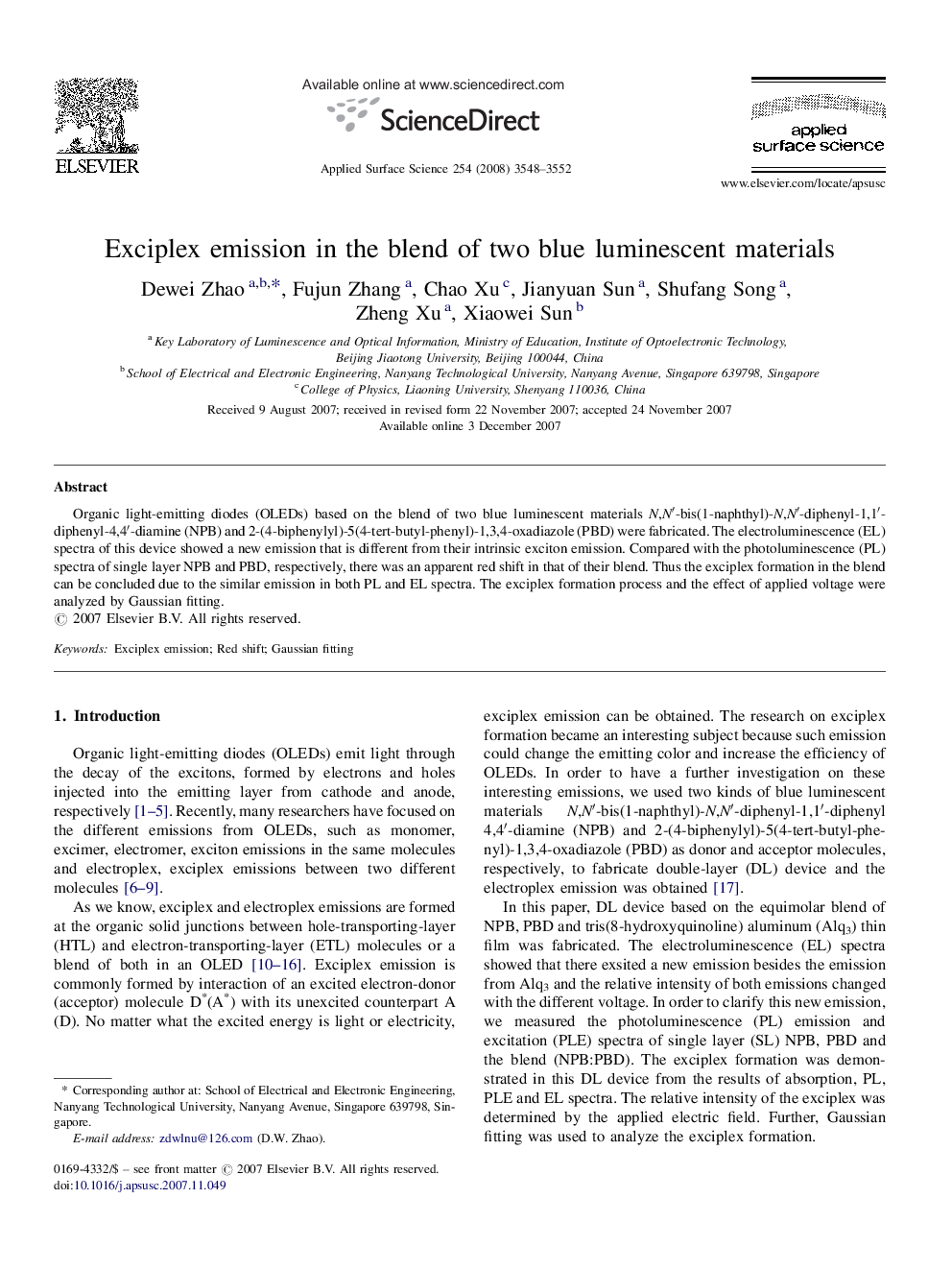| Article ID | Journal | Published Year | Pages | File Type |
|---|---|---|---|---|
| 5364968 | Applied Surface Science | 2008 | 5 Pages |
Abstract
Organic light-emitting diodes (OLEDs) based on the blend of two blue luminescent materials N,Nâ²-bis(1-naphthyl)-N,Nâ²-diphenyl-1,1â²-diphenyl-4,4â²-diamine (NPB) and 2-(4-biphenylyl)-5(4-tert-butyl-phenyl)-1,3,4-oxadiazole (PBD) were fabricated. The electroluminescence (EL) spectra of this device showed a new emission that is different from their intrinsic exciton emission. Compared with the photoluminescence (PL) spectra of single layer NPB and PBD, respectively, there was an apparent red shift in that of their blend. Thus the exciplex formation in the blend can be concluded due to the similar emission in both PL and EL spectra. The exciplex formation process and the effect of applied voltage were analyzed by Gaussian fitting.
Related Topics
Physical Sciences and Engineering
Chemistry
Physical and Theoretical Chemistry
Authors
Dewei Zhao, Fujun Zhang, Chao Xu, Jianyuan Sun, Shufang Song, Zheng Xu, Xiaowei Sun,
